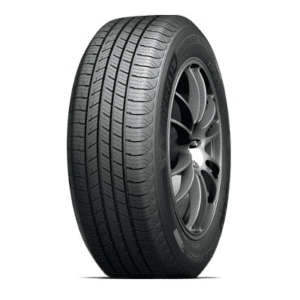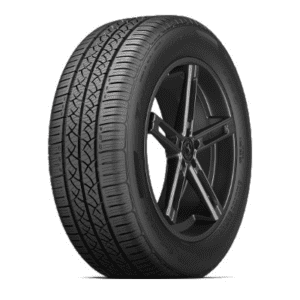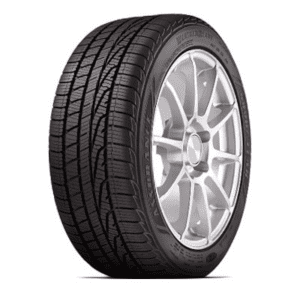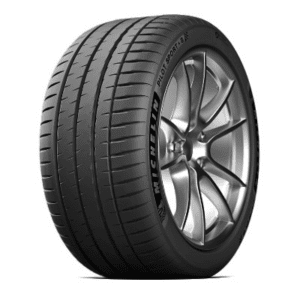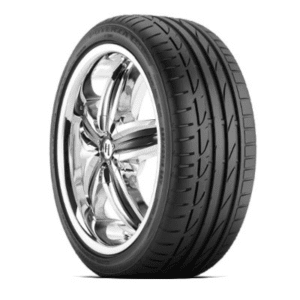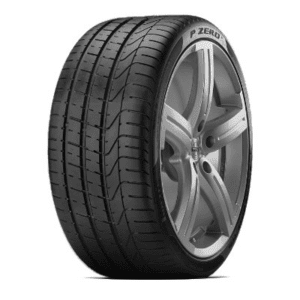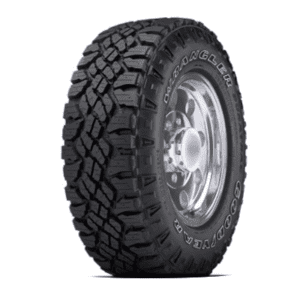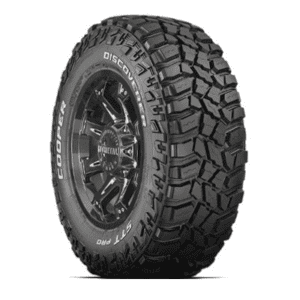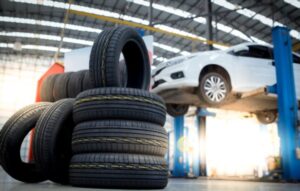When it comes to your vehicle’s safety, performance, and comfort, the right set of tires can make all the difference. With countless options available in the market, it can be overwhelming to find the perfect set for your ride. That’s where our ultimate new tire buying guide comes in! Our comprehensive guide will walk you through everything you need to know to make an informed decision, ensuring you get the most out of your investment. So buckle up, and let’s dive into the world of tires!
Understand Your Tire Needs
Before embarking on your quest for the perfect set of tires, it’s crucial to assess your driving habits and preferences. By understanding how and where you drive, you can prioritize the characteristics that matter most to you. Here are some factors to consider:
a) Driving Habits: Evaluate how you typically use your vehicle. Are you a daily commuter, a long-distance road-tripper, or an off-road adventurer? Your driving habits will help determine the tire type that best suits your needs, ensuring optimal performance and safety.
b) Weather and Road Conditions: Consider the weather and road conditions you frequently encounter. Do you live in an area that experiences heavy snowfall, frequent rain, or extreme temperatures? Or do you mainly drive on well-maintained highways and city streets? Identifying the most common conditions will help you select the right tire type for maximum traction and stability.
c) Tire Characteristics: With a clear understanding of your driving habits and conditions, think about which tire attributes are most important to you. Are you looking for performance and handling, fuel efficiency, ride comfort, or longevity? Prioritizing these characteristics will enable you to narrow down your search and find the ideal set of tires for your vehicle.
By taking the time to understand your tire needs, you’ll be better equipped to navigate the plethora of options available in the market. In the next section, we’ll help you decode tire sizes and specifications to further refine your search.
Recommended All-Season Tires
Decoding Tire Sizes and Specifications
Understanding the technical jargon associated with tires is essential in making an informed purchase. To make things easier, let’s break down the various components of tire sizes and specifications:
a) Tire Nomenclature: Tire size is typically displayed as a series of numbers and letters (e.g., 225/55R17). Here’s what each part means:
- The first number (225) is the tire width in millimeters.
- The second number (55) represents the aspect ratio, which is the tire’s height as a percentage of its width.
- The letter “R” denotes radial construction, the most common type of tire construction.
- The final number (17) is the wheel diameter in inches that the tire is designed to fit.
Click here: Use our tire size calculator
b) Load Carrying Capacity: The load index indicates the maximum weight a tire can support when properly inflated. This number is usually found after the tire size (e.g., 225/55R17 97V). In this example, the load index is 97, which corresponds to a maximum load of 1,609 lbs (730 kg) per tire.
Shop Tires Online and Save $$$
Online tire prices are usually less than in store
Click here: Use our load rating calculator
c) Speed Rating: The speed rating is represented by a letter found at the end of the tire size (e.g., 225/55R17 97V). This rating indicates the maximum speed at which a tire can safely carry its load. In our example, the “V” rating means the tire is safe to use at speeds up to 149 mph (240 km/h).
Click here: Use our speed rating calculator
d) UTQG (Uniform Tire Quality Grading) System: Established by the U.S. Department of Transportation, the UTQG system grades tires based on three criteria:
- Treadwear: A relative measure of a tire’s expected lifespan, expressed as a numerical rating. Higher numbers indicate longer-lasting tires.
- Traction: A measure of a tire’s ability to stop on wet surfaces. Graded from AA (highest) to C (lowest).
- Temperature: A rating of a tire’s resistance to heat buildup. Graded from A (highest) to C (lowest).
By understanding these tire sizes and specifications, you’ll be better equipped to compare different tire options and select the right set for your vehicle. In the next section, we’ll explore the various types of tires available in the market and their respective advantages and drawbacks.
Recommended Summer Tires
Types of Tires
When it comes to selecting the right tire for your vehicle, understanding the different types of tires available is essential. Each type is designed to cater to specific driving conditions, so let’s explore the most common tire types and their respective advantages and drawbacks:
a) All-Season Tires: These tires are designed to provide a balance of performance, comfort, and longevity in a variety of weather conditions. They are suitable for most drivers and offer good traction on wet and dry roads. However, they may not perform as well in extreme weather conditions, such as heavy snow or scorching heat.
b) Summer Tires: Engineered for optimal performance in warm weather, summer tires provide excellent grip on both wet and dry surfaces. They feature a unique tread pattern and rubber compound that enhances handling, cornering, and braking capabilities. However, they are not recommended for use in cold temperatures or on icy or snow-covered roads.
c) Winter Tires: Specifically designed for cold weather and snow or ice-covered roads, winter tires offer superior traction and control. They are made from a softer rubber compound that remains flexible in low temperatures, and their unique tread patterns are designed to grip snow and ice. However, they may wear out faster in warmer weather and are not ideal for year-round use.
d) Performance Tires: These tires are designed for high-performance vehicles and offer exceptional handling, grip, and cornering capabilities at higher speeds. They often feature a lower profile and stiffer sidewalls for improved steering response. However, performance tires may have a shorter lifespan, generate more road noise, and provide a less comfortable ride compared to other tire types.
e) Off-Road Tires: Built for off-road enthusiasts, these tires provide excellent traction and durability on a variety of terrains, such as mud, sand, rocks, and gravel. They usually have aggressive tread patterns, reinforced sidewalls, and larger sizes to handle rough conditions. However, off-road tires may generate more road noise, have a less comfortable ride, and offer reduced fuel efficiency compared to other tire types.
f) Run-Flat Tires: Designed to maintain their shape and support a vehicle’s weight even after a puncture, run-flat tires enable drivers to continue driving for a limited distance at a reduced speed. This can be beneficial in avoiding a roadside tire change. However, they can be more expensive, provide a stiffer ride, and may have a shorter lifespan compared to conventional tires.
g) Environmentally Friendly (Low Rolling Resistance) Tires: These tires are engineered to reduce rolling resistance, which can improve fuel efficiency and reduce CO2 emissions. They typically feature specialized tread patterns and rubber compounds to minimize energy loss. However, low rolling resistance tires may sometimes compromise traction or handling capabilities.
By understanding the various types of tires and their intended uses, you can make an informed decision based on your driving habits, local weather conditions, and performance priorities. In the next section, we’ll delve into the top tire brands and their offerings to help you further refine your tire search.
Recommended Off-Road Tires
Top Tire Brands and Their Offerings
Now that you’re familiar with the different types of tires, it’s essential to know the top tire manufacturers and their product lines. Each brand offers unique features and technologies that set them apart. Here’s an overview of well-known tire manufacturers and their key offerings:
a) Michelin: As one of the most recognized tire brands globally, Michelin is known for producing high-quality tires with excellent performance, comfort, and longevity. Their product lines include the popular Pilot Sport series for performance enthusiasts, the Energy Saver series for fuel efficiency, and the Defender series for all-season reliability.
b) Bridgestone: Bridgestone is a Japanese tire manufacturer that offers a wide range of tire options, catering to various driving needs. Some notable product lines include the Potenza series for performance driving, the Turanza series for touring comfort, and the Blizzak series for winter driving conditions.
c) Goodyear: As one of the largest tire manufacturers in the world, Goodyear is known for its innovative tire technologies and diverse product lineup. Key offerings include the Assurance series for all-season driving, the Eagle series for performance, and the Wrangler series for off-road capabilities.
d) Pirelli: Pirelli is an Italian tire manufacturer that focuses on high-performance tires and is a popular choice among luxury and sports car enthusiasts. Their product lines feature the P Zero series for ultimate performance, the Cinturato series for all-season touring, and the Scorpion series for SUVs and off-road vehicles.
e) Continental: A German tire manufacturer, Continental is known for its advanced tire technologies and commitment to safety. Their product lineup includes the ContiSportContact series for performance driving, the ContiProContact series for all-season capabilities, and the VikingContact series for winter conditions.
f) Yokohama: Yokohama is a Japanese tire manufacturer that offers a wide range of tire options for various vehicle types. Their product lines include the Advan series for performance enthusiasts, the Avid series for all-season driving, and the Geolandar series for off-road and SUV applications.
g) Cooper: As an American tire company, Cooper is known for producing affordable yet reliable tires. Their offerings include the Zeon series for performance driving, the CS series for all-season touring, and the Discoverer series for off-road and SUV applications.
When considering which brand to choose, it’s essential to research and compare their offerings based on your specific driving needs and preferences. Keep in mind that each brand may excel in certain aspects, so finding the right balance of performance, comfort, and durability is key. In the next section, we’ll discuss budget considerations and tips for finding the best deals and promotions on tires.
Shop Tires Online and Save $$$
Online tire prices are usually less than in store
Budget Considerations
When purchasing new tires, balancing quality and cost is crucial. While it’s tempting to opt for the cheapest option, remember that tires play a vital role in your vehicle’s safety, performance, and comfort. Here are some tips to help you make an informed decision while keeping your budget in mind:
a) Price vs. Quality: While it’s possible to find affordable tires that perform well, be cautious of low-quality options that may wear out quickly or compromise your vehicle’s handling and safety. Research the tire’s features, read reviews, and compare prices to ensure you’re getting the best value for your money.
b) Finding the Best Deals and Promotions: Tire prices can vary greatly between retailers, so shop around and compare prices from different sources. Look out for sales, rebates, and promotions from manufacturers and retailers that can help you save on your tire purchase. Be sure to also consider seasonal discounts, as tire prices tend to fluctuate throughout the year.
c) Understanding Total Cost of Ownership: The initial purchase price of a tire is only part of the equation. Factor in additional costs such as installation, balancing, alignment, and disposal fees when comparing tire prices. Also, consider the tire’s expected lifespan and any warranty coverage, as these can impact the overall value of your investment.
d) Buying Tires in Sets: Although it may be more expensive upfront, purchasing a full set of tires can save you money in the long run. Buying four tires at once often results in volume discounts, better tire performance, and even wear, extending the life of your tires.
e) Prioritizing Safety and Performance: While it’s essential to keep your budget in mind, prioritize safety and performance when choosing new tires. Investing in a quality set of tires can improve your driving experience, enhance fuel efficiency, and reduce the risk of accidents caused by tire failure.
By considering your budget, prioritizing safety and performance, and researching the best deals, you’ll be well on your way to finding the right set of tires for your vehicle. In the next section, we’ll discuss the importance of reading tire reviews and ratings to further refine your decision-making process.
Shop Tires Online and Save $$$
Online tire prices are usually less than in store
Reading Tire Reviews and Ratings
Tire reviews and ratings are invaluable resources when selecting the right set of tires for your vehicle. They provide insights into real-world performance, reliability, and overall satisfaction from actual users. Here’s how to make the most of tire reviews and ratings:
a) Trusted Sources: Look for reviews from reputable sources such as automotive magazines, websites, and consumer organizations. These reviews often provide in-depth analysis and objective comparisons between different tire models and brands.
b) Consumer Reviews: Websites like Tire Rack, Amazon, and major tire retailers often have user-generated reviews that share personal experiences with specific tire models. These reviews can offer valuable insights into factors such as ride comfort, noise levels, tread life, and performance in various conditions. However, keep in mind that individual experiences may vary, and it’s essential to consider the overall consensus across multiple reviews.
c) Professional Test Results: Some organizations, such as Consumer Reports, conduct rigorous testing of tire performance, safety, and longevity. These tests can provide objective data and rankings, helping you compare different tire models and make a more informed decision.
d) Comparing Reviews and Ratings: When reading reviews and ratings, pay close attention to factors that are most important to you, such as handling, traction, comfort, or durability. Also, consider how well the tire performs in the specific driving conditions you frequently encounter.
e) Consistency and Trends: Look for consistent trends and feedback across multiple reviews. If several reviewers mention similar issues or praise specific aspects, it’s likely an accurate representation of the tire’s performance.
f) Vehicle Compatibility: Keep in mind that certain tires may perform differently on different vehicles. Look for reviews from users with a similar vehicle make and model to yours, as this can provide more accurate insights into how the tire may perform on your specific vehicle.
By carefully analyzing tire reviews and ratings, you can gain a better understanding of how a particular tire model performs in real-world conditions. This information, combined with your research on tire specifications, types, and brands, will help you make a well-informed decision when purchasing new tires. In the next section, we’ll discuss the importance of proper tire maintenance to ensure your new tires provide optimal performance and longevity.
Shop Tires Online and Save $$$
Online tire prices are usually less than in store
Tire Warranty and After-Sales Support
A comprehensive tire warranty and reliable after-sales support are essential factors to consider when purchasing new tires. They provide peace of mind, ensuring that you’re protected in case of manufacturing defects or premature wear. Here’s what to look for in tire warranties and after-sales support:
a) Warranty Coverage: Tire warranties typically include coverage for manufacturing defects and treadwear. Manufacturing defects are usually covered for a specific period or until the tire’s tread reaches a minimum depth. Treadwear warranties, on the other hand, cover premature wear and are based on mileage. Be sure to read the warranty terms carefully to understand what’s covered and any exclusions or limitations.
b) Prorated vs. Full Replacement: Some warranties offer prorated coverage, which means the replacement cost is calculated based on the tire’s remaining tread depth at the time of the claim. This can result in higher out-of-pocket costs compared to a full replacement warranty, which covers the entire cost of a new tire.
c) Road Hazard Coverage: Some tire manufacturers and retailers offer road hazard warranties, which cover damage caused by punctures, cuts, or impact with road debris. This type of warranty can be particularly valuable if you frequently drive in areas with poor road conditions or construction zones.
d) After-Sales Support: Reliable after-sales support is crucial when you have questions or concerns about your new tires. Look for manufacturers and retailers that offer customer support through multiple channels, such as phone, email, or live chat. Additionally, consider whether the manufacturer has a strong network of authorized dealers and service centers to assist with any warranty claims or tire maintenance needs.
e) Warranty Registration: After purchasing your new tires, be sure to register your warranty with the manufacturer. This will ensure that your warranty is activated and that you’ll receive any important notifications or updates regarding your tires.
By considering warranty coverage and after-sales support when purchasing new tires, you can protect your investment and ensure you receive the best possible service throughout the life of your tires. In the next section, we’ll discuss the importance of proper tire maintenance to maximize the performance and longevity of your new tires.
Shop Tires Online and Save $$$
Online tire prices are usually less than in store
Making the Purchase
Now that you’ve thoroughly researched tire types, brands, reviews, and warranties, it’s time to make your purchase. To ensure a smooth buying experience, follow these steps:
a) Choose the Right Retailer: Decide whether you want to purchase your tires from a local tire shop, a big-box retailer, or an online store. Each option has its pros and cons. Local shops may offer personalized service and support, big-box retailers can provide competitive pricing, and online stores typically have a broader selection. Consider factors such as price, convenience, and after-sales support when making your decision.
b) Verify Tire Availability: Before committing to a specific retailer, confirm that they have the tire model and size you need in stock or can order it for you. If the desired tire is unavailable or on backorder, you may need to consider an alternative retailer or tire model.
c) Request a Quote: Ask the retailer for a detailed quote that includes the total cost of the tires, installation fees, balancing and alignment charges, and any additional services such as tire disposal or road hazard coverage. This will help you compare prices and ensure there are no hidden fees.
d) Schedule an Appointment: If you’re purchasing from a local shop or big-box retailer that offers installation services, schedule an appointment for tire installation. Keep in mind that some shops may be busier during peak seasons, so plan accordingly to avoid delays.
e) Review the Invoice: When making your purchase, carefully review the invoice to ensure all charges are accurate and that any discounts or promotions have been applied. Don’t hesitate to ask the retailer for clarification if you have any questions or concerns.
f) Save Your Receipt and Warranty Information: Keep a copy of your receipt and warranty documentation in a safe place. You’ll need these documents if you need to make a warranty claim or seek after-sales support in the future.
By following these steps, you can confidently make your tire purchase, knowing you’ve done your due diligence to find the best tires for your vehicle at a competitive price. In the next section, we’ll cover the importance of proper tire maintenance to ensure optimal performance and longevity for your new tires.
Shop Tires Online and Save $$$
Online tire prices are usually less than in store
Post-Purchase Tire Care and Maintenance
Proper tire care and maintenance are crucial to ensuring the safety, performance, and longevity of your new tires. Follow these tips to keep your tires in optimal condition:
a) Regular Tire Inspections: Visually inspect your tires for signs of damage, such as cuts, punctures, or bulges. Check for uneven wear patterns, which could indicate an issue with alignment or suspension. Address any concerns promptly to prevent further damage or safety risks.
b) Tire Pressure Monitoring: Maintaining the correct tire pressure is essential for optimal handling, fuel efficiency, and tire life. Check your tire pressure at least once a month and before long trips, using a reliable tire pressure gauge. Inflate your tires according to the manufacturer’s recommended pressure, which can typically be found on a placard on the driver’s side doorjamb or in the owner’s manual.
c) Tire Rotations: Regular tire rotations help ensure even wear across all four tires, extending their lifespan and improving overall performance. Most manufacturers recommend rotating your tires every 5,000 to 8,000 miles, or as specified in your vehicle’s owner’s manual. Follow the appropriate rotation pattern for your vehicle and tire type.
d) Balancing and Alignment: Proper tire balancing and alignment are crucial for a smooth ride and even tire wear. Have your tires balanced whenever you notice vibrations at certain speeds or when you purchase new tires. Get your vehicle’s alignment checked if you notice uneven wear patterns, steering problems, or if your vehicle pulls to one side.
e) Tread Depth Monitoring: Monitor your tire tread depth regularly to ensure your tires maintain adequate traction. Use the penny test or a tread depth gauge to check your tread. If the tread depth reaches 2/32 of an inch or less, it’s time to replace the tire for safety reasons.
f) Avoid Overloading: Overloading your vehicle can cause excessive heat buildup and lead to tire failure. Always adhere to the maximum load capacity specified in your vehicle’s owner’s manual and on the tire information placard.
By following these tire care and maintenance guidelines, you’ll help ensure the safety, performance, and longevity of your new tires. Regular tire maintenance not only extends the life of your tires but also contributes to a safer and more enjoyable driving experience.
Shop Tires Online and Save $$$
Online tire prices are usually less than in store
Tire Safety and Performance Features
Tire manufacturers continuously develop new technologies and features to enhance safety, performance, and durability. Understanding these features can help you make a more informed decision when purchasing new tires. Here are some key tire safety and performance features to consider:
a) Tread Patterns: The tread pattern of a tire can greatly impact its performance in various conditions. Tires with symmetrical tread patterns provide a smooth and quiet ride, while directional tread patterns offer improved traction on wet or slippery surfaces. Asymmetrical tread patterns combine elements of both, providing a balance of comfort and performance.
b) Tread Compounds: The rubber compound used in the tire’s construction can influence its grip, wear, and fuel efficiency. For example, high-performance tires often use softer compounds for enhanced grip, while touring tires prioritize a harder compound for longer tread life and improved fuel economy.
c) Siping: Sipes are small slits in the tire’s tread blocks that help increase traction on wet or icy surfaces by providing additional biting edges. More sipes can lead to better traction in adverse conditions but may also result in a slightly softer ride.
d) Reinforced Sidewalls: Some tires feature reinforced sidewalls, which provide additional support and help maintain the tire’s shape under heavy loads. This can be beneficial for vehicles that regularly carry heavy cargo or tow trailers.
e) Run-Flat Tires: Run-flat tires are designed to maintain their shape and support the vehicle’s weight even after a puncture, allowing you to continue driving for a limited distance at reduced speeds. While this technology can be convenient and increase safety, run-flat tires tend to be more expensive and may have a shorter lifespan compared to conventional tires.
f) Noise Reduction Technology: Some tire manufacturers employ noise reduction technologies, such as foam inserts or optimized tread patterns, to minimize tire noise and provide a quieter, more comfortable driving experience.
g) Low Rolling Resistance: Tires with low rolling resistance are designed to minimize the energy lost as the tire rolls, resulting in improved fuel efficiency. These tires often feature specialized tread compounds and patterns to reduce friction and heat generation.
When evaluating tire safety and performance features, consider which ones are most important to you based on your driving habits and conditions. By selecting tires with the appropriate features for your needs, you’ll ensure a safer, more comfortable, and efficient driving experience.
Shop Tires Online and Save $$$
Online tire prices are usually less than in store
Tire Innovations and Technologies
The tire industry is continuously evolving, with manufacturers investing in research and development to create innovative technologies that enhance safety, performance, and sustainability. Here are some noteworthy tire innovations and technologies that have emerged in recent years:
a) Airless Tires: Airless or non-pneumatic tires are designed without the need for air pressure. Instead, they use a flexible, honeycomb-like structure to support the vehicle’s weight. This technology eliminates the risk of flat tires and offers improved durability, but is currently limited to select applications, such as commercial or off-road vehicles.
b) Self-Sealing Tires: Self-sealing tires contain a specialized sealant layer within the tire that can automatically seal punctures up to a certain size. This technology helps prevent air loss and allows the driver to continue driving without the need for immediate repair.
c) Smart Tires: Smart tires are equipped with sensors that collect data on tire pressure, temperature, and wear. This information can be transmitted to the driver or vehicle’s onboard computer, allowing for real-time monitoring and maintenance alerts.
d) Energy-Generating Tires: Some tire manufacturers are experimenting with technologies that generate electricity as the tire rolls. This energy could potentially be used to power electric vehicles or vehicle systems, improving overall efficiency.
e) Sustainable Materials: Tire manufacturers are increasingly focused on sustainability, exploring the use of renewable materials such as natural rubber, plant-based oils, and recycled materials in tire production. These efforts aim to reduce the environmental impact of tire manufacturing and disposal.
f) Adaptive Tread Technology: Some tire manufacturers are developing adaptive tread technology, which can alter the tire’s contact patch or tread pattern based on driving conditions. This innovation has the potential to improve traction, handling, and safety in various situations, such as wet or icy roads.
g) 3D-Printed Tires: 3D printing technology has the potential to revolutionize tire production by allowing manufacturers to create custom tire designs with complex structures and reduced waste. While not yet widely available, 3D-printed tires could pave the way for more sustainable and efficient tire manufacturing processes.
These tire innovations and technologies demonstrate the industry’s commitment to enhancing safety, performance, and sustainability. As these technologies continue to advance, drivers can expect to benefit from improved tire features and performance characteristics tailored to their specific needs.
Shop Tires Online and Save $$$
Online tire prices are usually less than in store
Understanding Your Vehicle’s OE (Original Equipment) Tires
Original Equipment (OE) tires are the tires that come pre-installed on a new vehicle when it leaves the factory. Vehicle manufacturers work closely with tire manufacturers to develop OE tires that complement a vehicle’s specific performance characteristics, handling, and comfort requirements. Here’s what you should know about your vehicle’s OE tires:
a) Tailored Performance: OE tires are designed to provide a balance of performance, safety, and comfort that matches the vehicle manufacturer’s specifications. They are chosen based on factors such as ride quality, handling, fuel efficiency, and noise levels, ensuring an optimal driving experience for a particular vehicle model.
b) OE Tire Markings: Some OE tires are marked with special symbols or codes to indicate that they have been specifically designed for a particular vehicle make or model. For example, you might see markings like “MO” for Mercedes-Benz Original, “AO” for Audi Original, or “F” for Ferrari. While not all OE tires have these markings, they can help identify tires that are tailored to your vehicle.
c) Replacing OE Tires: When it’s time to replace your vehicle’s tires, you have the option to stick with OE tires or choose a different brand or model. While OE tires can provide a consistent driving experience, you may find alternative tires that better suit your driving preferences, budget, or local driving conditions. Research tire options, read reviews, and consult with a tire professional to determine the best choice for your needs.
d) Performance Upgrades: If you’re looking to enhance your vehicle’s performance, consider upgrading to a different tire type, such as high-performance or ultra-high-performance tires. These tires typically offer improved grip, handling, and responsiveness, but may come with trade-offs in terms of ride comfort, noise levels, or tread life.
By understanding your vehicle’s OE tires and their intended performance characteristics, you can make informed decisions when it’s time to replace them. Whether you choose to stick with OE tires or opt for an alternative, always prioritize safety, performance, and compatibility with your vehicle’s specifications.
Shop Tires Online and Save $$$
Online tire prices are usually less than in store
Legal Requirements and Regulations
When purchasing new tires, it’s essential to consider the legal requirements and regulations in your region to ensure your tires meet safety standards and are compliant with local laws. Here are some key aspects to consider:
a) Minimum Tread Depth: Most countries have a legal minimum tread depth requirement to ensure that tires maintain adequate traction and are safe for road use. For example, in the United States, the minimum tread depth is 2/32 of an inch, while in most European countries, it’s 1.6 millimeters. Always replace your tires before they reach the minimum tread depth to stay within legal requirements and maintain safe driving conditions.
b) Tire Speed Ratings: Tires are assigned speed ratings based on their ability to safely handle high-speed driving. It’s crucial to choose tires with a speed rating that meets or exceeds your vehicle manufacturer’s recommendations. Fitting tires with a lower speed rating than recommended can negatively impact your vehicle’s handling and safety, and may also be illegal.
c) Load Capacity: Each tire has a specific load capacity, which indicates the maximum weight it can safely carry. Ensure that the tires you choose have a load capacity suitable for your vehicle and its intended use. Overloading your tires can lead to tire failure and is considered illegal in many jurisdictions.
d) Tire Age Regulations: Some countries have regulations regarding the maximum age of tires allowed on their roads. For example, in some European countries, tires over ten years old are not permitted, regardless of their condition. Always check the date of manufacture (DOT code) on the sidewall of the tire and comply with local regulations concerning tire age.
e) Winter Tire Requirements: In regions with severe winter weather, specific winter tire requirements may be in place. These regulations could include mandatory use of winter or snow tires during certain months or under specific weather conditions. Ensure that your tires meet these requirements to maintain compliance and safe driving conditions.
By understanding and adhering to the legal requirements and regulations in your region, you can ensure that your new tires are compliant with local laws and provide a safe driving experience. Always consult with a tire professional or check your local regulations if you have any doubts or questions about the suitability of your tires.
Shop Tires Online and Save $$$
Online tire prices are usually less than in store
Tire Sizing and Upgrading Considerations
When purchasing new tires, it’s essential to choose the correct tire size for your vehicle to ensure optimal performance, safety, and compatibility. Additionally, you may be considering tire upgrades for improved performance or aesthetics. Here are some tire sizing and upgrading considerations to keep in mind:
a) Stock Tire Size: Your vehicle’s stock tire size can be found on the tire information placard located on the driver’s side doorjamb, in the owner’s manual, or sometimes on the fuel filler door. This size is recommended by the vehicle manufacturer to provide the best balance of performance, safety, and comfort. Always verify that the new tires you’re purchasing match the stock size, unless you’re intentionally upgrading.
b) Plus Sizing: Plus sizing involves increasing the diameter of your wheels while decreasing the tire’s sidewall height to maintain the overall tire diameter. This upgrade can improve your vehicle’s handling and responsiveness, as well as enhance its appearance. However, plus sizing may also result in a firmer ride, increased road noise, and reduced tire lifespan. Consult with a tire professional to determine the appropriate plus-sizing options for your vehicle.
c) Load Capacity and Speed Rating: When upgrading your tires, ensure that they meet or exceed your vehicle’s recommended load capacity and speed rating. Upgrading to tires with a lower load capacity or speed rating than recommended can negatively impact your vehicle’s handling, safety, and may also be illegal.
d) Tire Clearance: When considering larger tires or different wheel sizes, ensure that there is adequate clearance within your vehicle’s wheel wells and suspension components to prevent rubbing or other issues. Consult with a tire professional or your vehicle’s manufacturer for guidance on acceptable tire and wheel size upgrades.
e) Suspension and Brake Upgrades: If you’re upgrading your tires for improved performance, you may also want to consider suspension and brake upgrades. These enhancements can help maintain proper vehicle balance and ensure that your vehicle’s handling and stopping capabilities are optimized for the new tires.
By carefully considering tire sizing and upgrading options, you can ensure that your new tires are compatible with your vehicle and provide the desired performance improvements. Always consult with a tire professional when making significant changes to your tire and wheel setup to ensure optimal safety and compatibility.
Shop Tires Online and Save $$$
Online tire prices are usually less than in store
Tire Storage and Transportation Tips
Proper tire storage and transportation are essential to maintaining the condition and performance of your tires. Whether you’re storing seasonal tires, transporting new tires to be mounted, or preparing for a long trip, here are some tips to help you keep your tires in top shape:
a) Clean Tires Before Storage: Before storing your tires, clean them thoroughly to remove any dirt, debris, or brake dust. Allow them to dry completely to prevent the growth of mold or mildew.
b) Store in a Cool, Dry Place: Tires should be stored in a cool, dry, and dark environment to prevent exposure to heat, moisture, and direct sunlight. These factors can cause the rubber to deteriorate, reducing the tire’s lifespan and performance.
c) Stack Tires Horizontally or Use a Tire Rack: For unmounted tires, it’s best to store them horizontally, stacked on top of one another, or use a dedicated tire rack to keep them off the ground. Avoid storing tires vertically or hanging them from hooks, as this can cause deformation over time.
d) Inflate Tires to Recommended Storage Pressure: Tires can lose pressure over time, even when not in use. Inflate your tires to the recommended storage pressure, which is typically the same as the manufacturer’s recommended pressure for normal use. Check the pressure periodically and adjust as needed.
e) Use Tire Covers or Bags: Protect your tires from dust, dirt, and UV exposure by using tire covers or bags specifically designed for tire storage. This will help maintain the rubber’s condition and prolong the life of the tire.
f) Rotate Tires During Storage: If you’re storing tires for an extended period, rotate their positions every few months to prevent flat spots or uneven weight distribution.
g) Transporting Tires: When transporting tires, ensure they’re secured properly to prevent movement or damage during transit. If possible, place them in a vehicle’s trunk or cargo area, or use a roof rack designed for tire transportation. Avoid stacking heavy items on top of the tires, as this can cause damage.
By following these tire storage and transportation tips, you can help maintain the condition and performance of your tires, ensuring they’re ready for use when you need them. Proper care and attention to storage conditions can extend the life of your tires and contribute to a safer, more enjoyable driving experience.
Shop Tires Online and Save $$$
Online tire prices are usually less than in store
Conclusion
Purchasing new tires is an important decision that can greatly impact your vehicle’s safety, performance, and overall driving experience. By following this comprehensive guide, you’ll be well-equipped to make informed choices when selecting your next set of tires. Remember to consider your driving needs, understand tire sizes and specifications, explore various tire types and brands, and comply with legal requirements and regulations.
Always prioritize safety, performance, and compatibility when choosing new tires, and don’t forget the importance of proper tire care, maintenance, and storage to extend their lifespan. Consult with a tire professional if you have any doubts or questions about the best tires for your vehicle, and keep up-to-date with tire innovations and technologies to make the most of your investment.
Armed with this knowledge, you can confidently navigate the tire buying process and enjoy a safer, more comfortable, and efficient driving experience.


